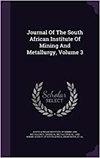Real-time underground route identification and route progress using simple on-board sensing and processing
IF 0.9
4区 材料科学
Q3 Materials Science
Journal of The South African Institute of Mining and Metallurgy
Pub Date : 2023-02-23
DOI:10.17159/2411-9717/1893/2023
引用次数: 0
Abstract
The global emphasis on conserving energy resources has led to the adoption of hybrid power systems in vehicles. Optimally applied, hybrid systems can save up to 40% on fuel costs. To optimally manage a hybrid vehicle's energy flow it is necessary to know, in real time, all the energy requirements to complete a given route. The energy consumption depends mainly on the vehicle mass, speed profile, and route topography. Of these, the topographic profile is the one factor that is only route-dependent and not influenced by the vehicle or driving styles. The heading vs. distance profile is also an example of a route characteristic not influenced by the vehicle or driving style. In this study the topographic and heading profiles are used to identify routes, and are easily measured by means of digital barometric pressure and compass sensors. Correlations between the current route and previously travelled/stored routes are performed based on their topographic and heading profiles in a point-by-point manner. Above-ground tests were first performed using a road vehicle and six routes to evaluate the system. The system consistently and correctly identified a 20 km route within the first 4 km. It also proved to function correctly in underground tests through the implementation of an instrumented hand-held surveyor's wheel. This system finds direct practical application in optimizing the energy management of an underground hybrid locomotive used by the mining industry in South Africa, but can also be of benefit in applications where route identification is required and using GPS is not feasible.利用简单的车载传感和处理实现实时地下路线识别和路线进展
全球对节约能源的重视导致了混合动力系统在车辆中的采用。最佳应用,混合动力系统可以节省高达40%的燃料成本。为了优化管理混合动力汽车的能量流,有必要实时了解完成给定路线所需的所有能量。能量消耗主要取决于车辆质量、速度剖面和路线地形。在这些因素中,地形轮廓是唯一一个只依赖于路线而不受车辆或驾驶风格影响的因素。方向与距离的对比也是不受车辆或驾驶风格影响的路线特征的一个例子。在本研究中,地形和航向轮廓线被用来识别路线,并且很容易通过数字气压和罗经传感器测量。当前路线和以前旅行/存储的路线之间的相关性是基于它们的地形和标题剖面图以逐点的方式执行的。首先使用一辆公路车辆和六条路线进行了地面测试,以评估该系统。该系统在前4公里内始终准确地识别出一条20公里的路线。在地下测试中,它也被证明是正确的,通过一个仪器手持测量轮的实施。该系统在优化南非采矿业使用的地下混合动力机车的能源管理方面有直接的实际应用,但也可以在需要路线识别且无法使用GPS的应用中受益。
本文章由计算机程序翻译,如有差异,请以英文原文为准。
求助全文
约1分钟内获得全文
求助全文
来源期刊
CiteScore
1.50
自引率
11.10%
发文量
61
审稿时长
4-8 weeks
期刊介绍:
The Journal serves as a medium for the publication of high quality scientific papers. This requires that the papers that are submitted for publication are properly and fairly refereed and edited. This process will maintain the high quality of the presentation of the paper and ensure that the technical content is in line with the accepted norms of scientific integrity.

 求助内容:
求助内容: 应助结果提醒方式:
应助结果提醒方式:


